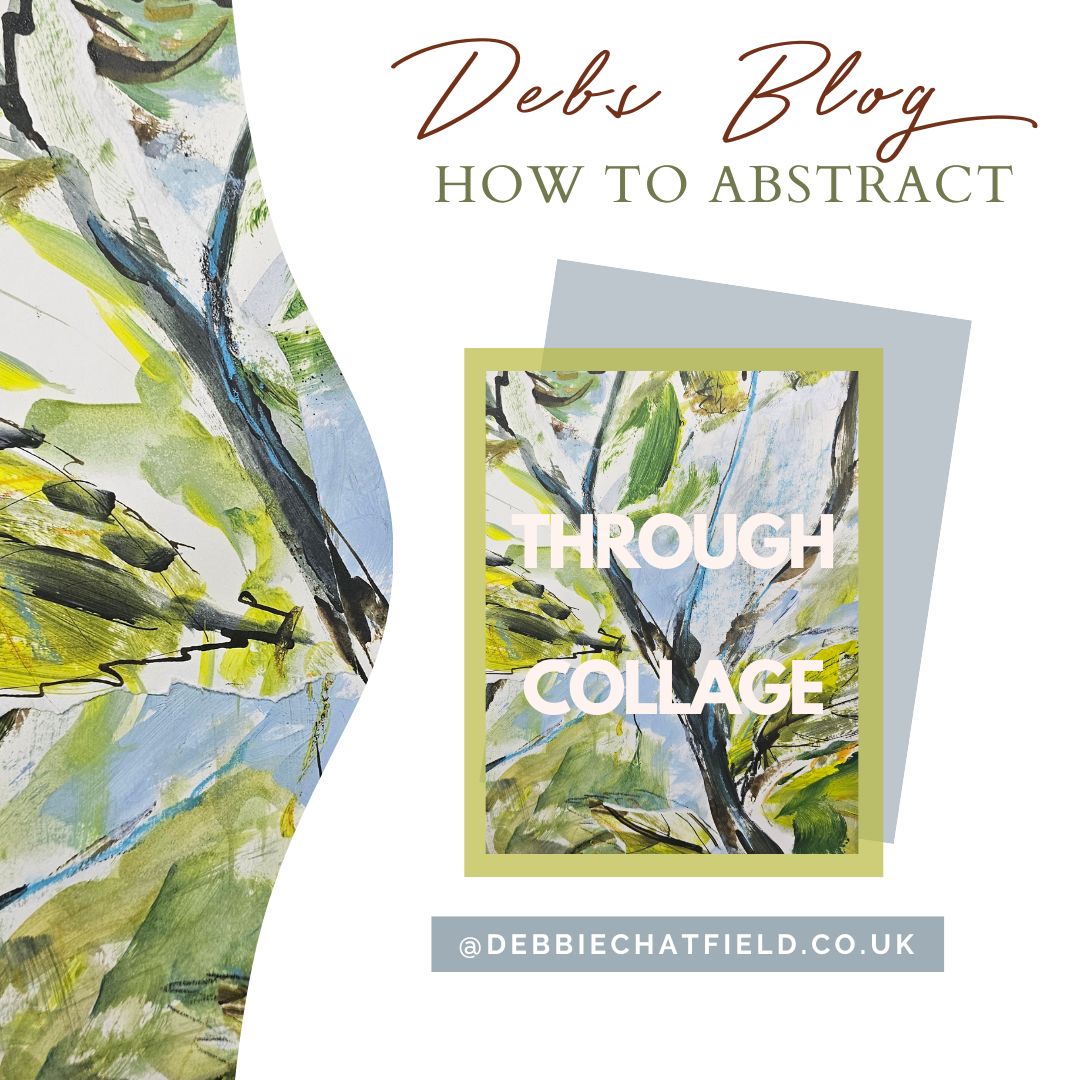
Abstracting from Reality Through Collage: Finding Inspiration in Everyday Life
Share
Abstracting from Reality Through Collage
Choosing What to Paint

Lately, I’ve been spending time in my garden, sketchbook in hand, simply noticing.
The way light falls across a leaf, the odd angles of branches, the textures that emerge if you sit with them for a while. This quiet kind of looking is where my process begins. From there, I decide what to carry forward into collage and, eventually, into painting.
I think of it as abstracting from reality—taking what I see, breaking it down, and reshaping it into something new. It’s not about copying the garden exactly as it is, but about filtering it through my own eyes and imagination.
Inspired by Other Artists
This way of working didn’t come to me on its own. I was first introduced to the idea of using collage in my process through a course with Lewis Noble, a Derbyshire landscape artist. His method of cutting, layering, and rearranging sketches really struck me—it felt freeing, like zooming in on my personal viewpoint.
Another big influence is David Mankin, an artist living in Cornwall, whose abstract seascapes are rooted in his immediate environment. His studio sits by the sea, and he draws inspiration from sketches, or found objects from the beach. I love not only his work but also the way he builds his practice around what surrounds him.
Both artists have helped me see that it’s not just the finished work that matters—it’s the process. Their methods gave me permission to adapt and make it my own, and that’s what I’m excited to share here.
From Inspiration to Collage
In the next video I demonstrate how I cut and collage large A2 sketches (on cartridge paper) into my A3 sketchbook. The example is based on photographs from my garden, but the principle can be applied to any subject that inspires you.
This won’t be everyone’s preferred way of working, but I hope you’ll find ideas you can adapt to your own process—or simply enjoy seeing how I approach it. Collaging like this helps generate original compositions and often produces pieces that stand on their own as finished artworks.
For this session, I used:
- Acrylic paint (colours are listed in the video—feel free to use your own palette)
- Acrylic ink (sepia)
- Pastels and oil pastels
- A Stabilo Woody pencil
- Extra-strength glue
Other useful tools included a ruler, palette knife, spare paper for gluing, and strips of paper to help find the best crop within a sketch.
Join the Conversation
If you have any questions, feel free to leave a comment under the video or post in the Art Hub Facebook group. You can also suggest topics or questions you’d like me to cover in future sessions.
Most importantly, I’d love to see your work—whether you try collage in this way or use the idea as a springboard into your own creative path. Share your pieces either here or in the Art Hub Community, which you can join for free:
✨ Enjoy the process of abstracting from your surroundings, and see where it takes your art.
